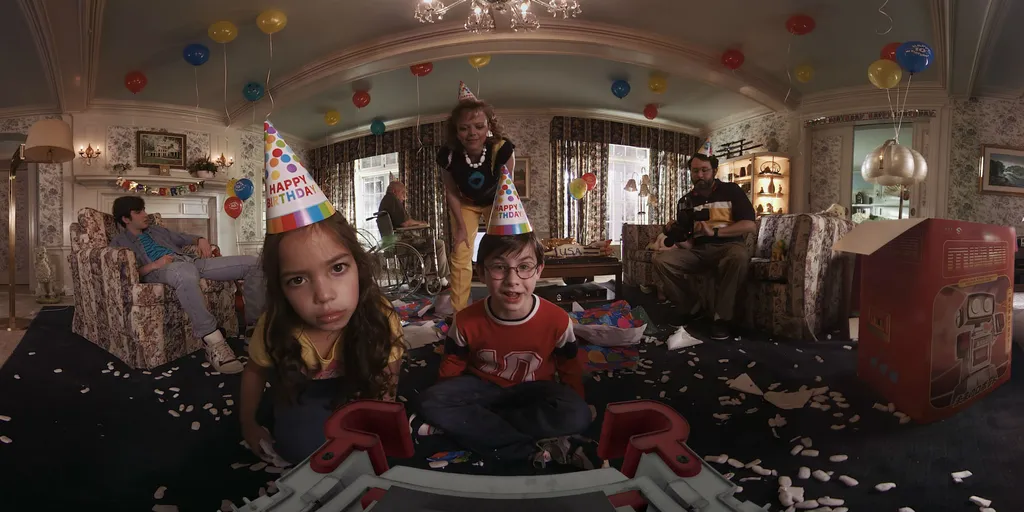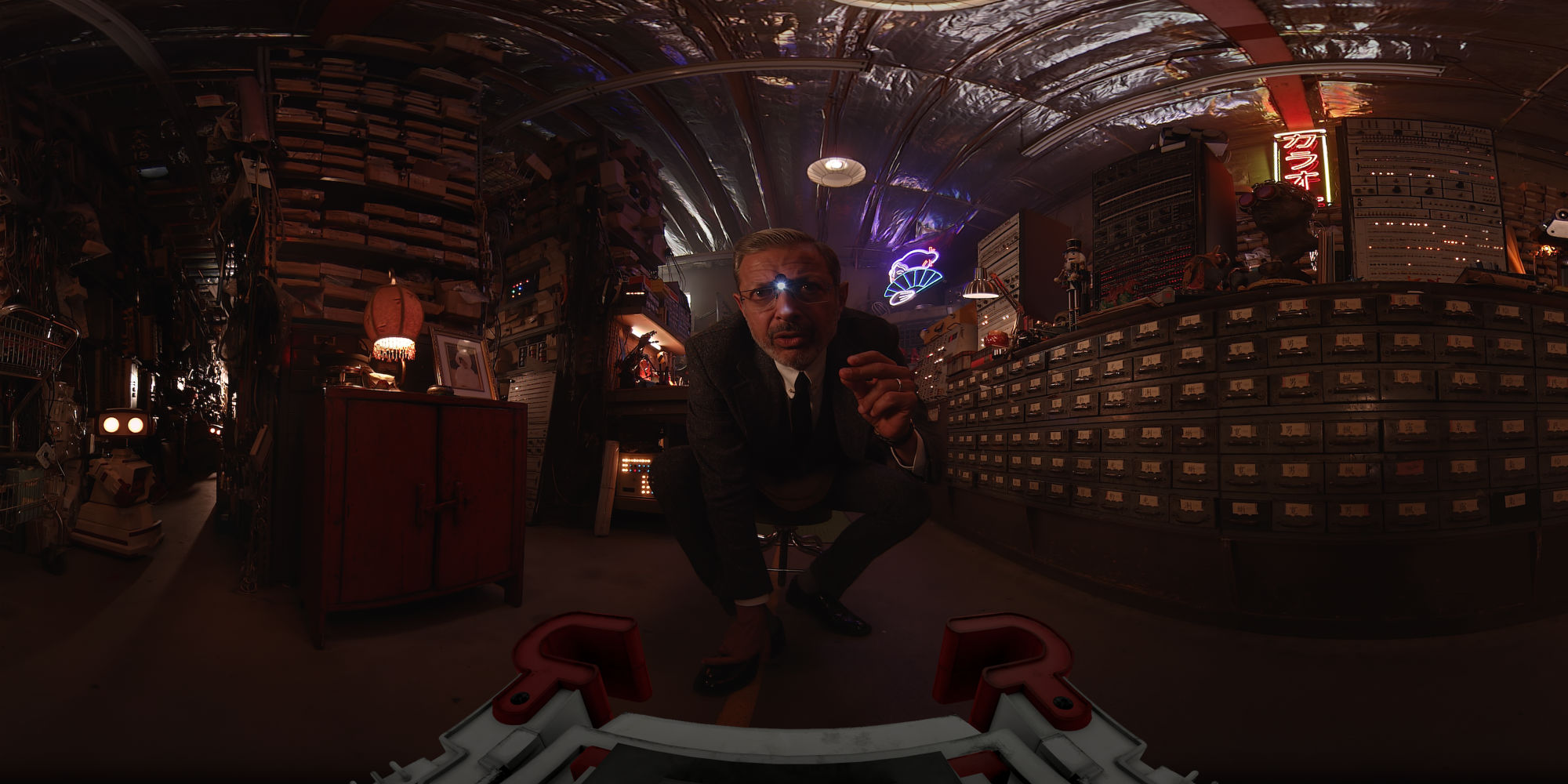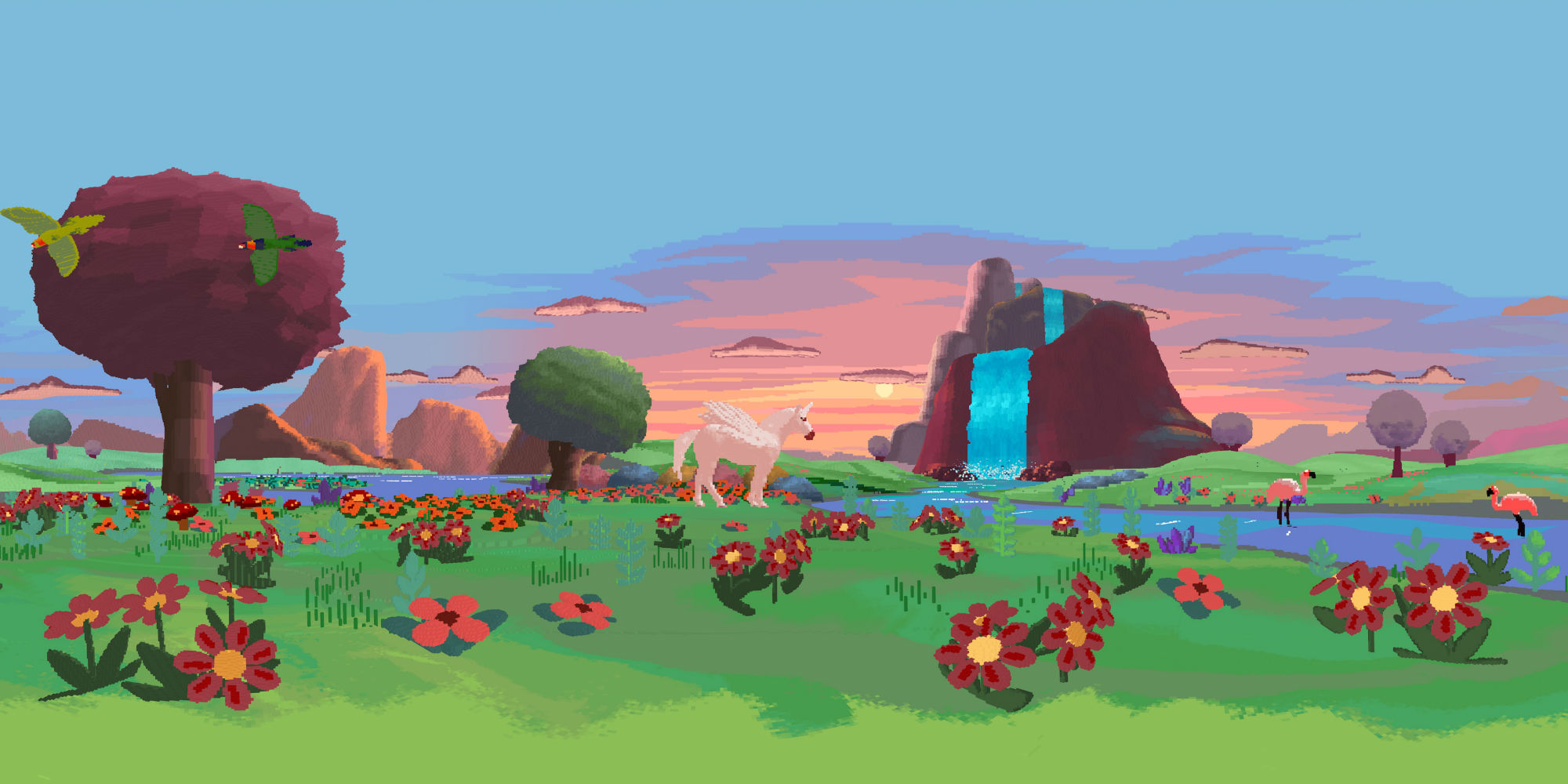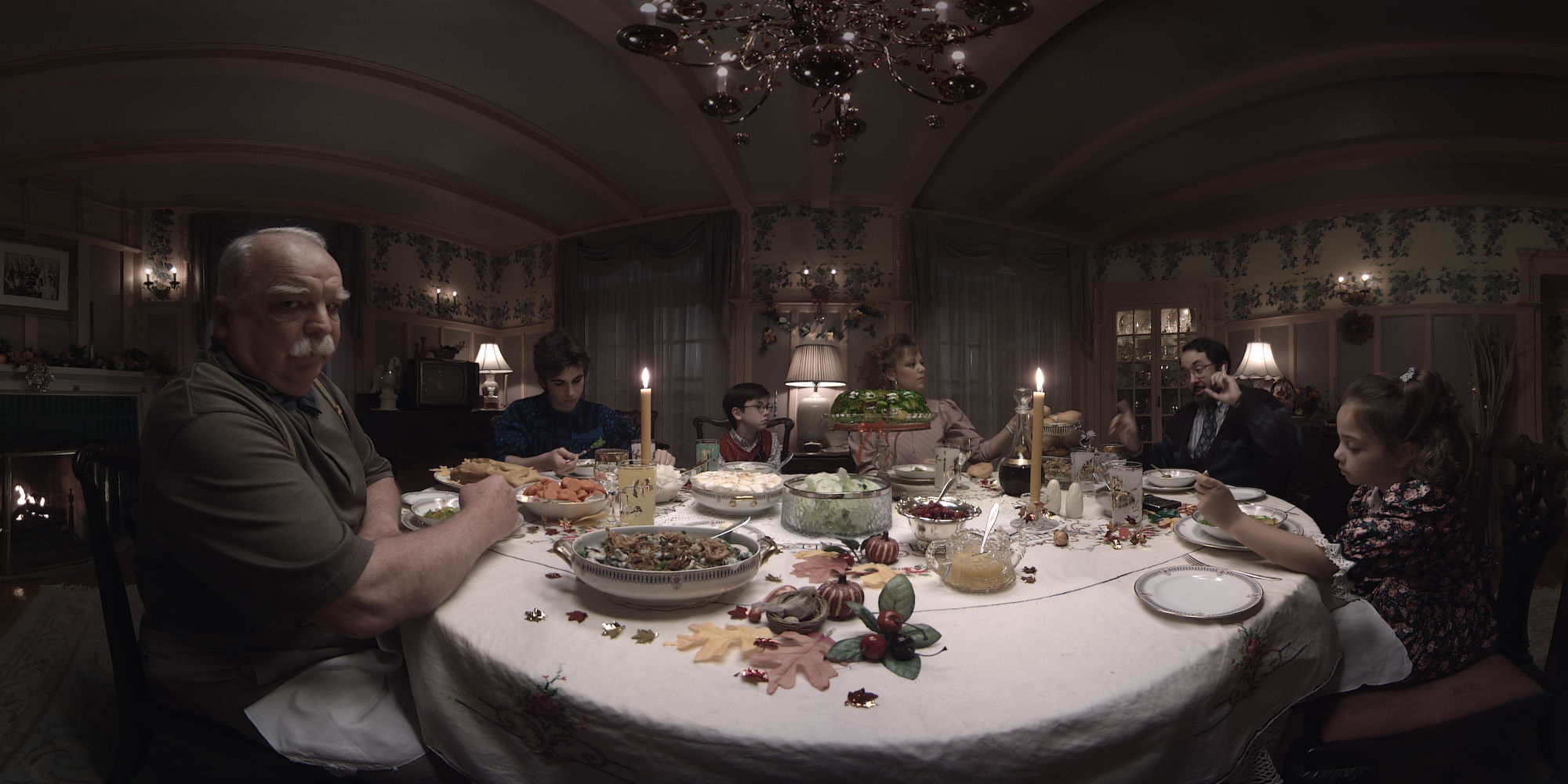Become a toy robot and enter the future of sitcoms in Felix & Paul Studios Miyubi – the industry’s first ever live action long-form VR comedy, now available free on the Oculus Store for both Rift and Gear VR. In Miyubi, the viewer is a robot who is gifted to a quirky family’s brilliant young son, in 1982.
Not only did I find Miyubi laugh-out-loud funny, but it feels like a masterclass on how to push the limits with story length and genre in cinematic VR. It’s proof that comedy has a definite place in VR storytelling, and, at 42 minutes, that long-form content works with the right techniques.
I sat down with visionaries Félix Lajeunesse and Paul Raphaël to discover their secrets behind creating their clever long-form comedy in VR, in collaboration with Funny or Die. This is what I learned:
Who Your Viewer Is, Anchors Your Story
Lajeunesse explained “one thing that really made us laugh was when we started to visualize … if we put the viewer inside of the mind and body of a two-foot-high plastic robot, how that is going to make you feel, not only about yourself, but about the world itself…the concept itself is inherently comedic – change the viewer’s relation to the world.” Raphaël furthered the point that “the low angle perspective really gives everything a caricature quality that facilitated a lot of the comedy that was going on.”
When building a story for VR, Lajeunesse and Raphaël’s first step is always defining the role of the viewer in the story. “In Miyubi, that was the core concept. We wanted the viewer to be this sort of gradually abandoned toy robot in 1982, and to experience love, and to experience obsolescence, and being abandoned, and being loved again.”
Miyubi interacts with its world in a limited way, which is not only natural for this toy character, but also a fit with the current limitations of interactivity with 360 content. As an exciting first for Felix & Paul experiences, Miyubi has some subtle interactive components that align with the robot character, so that they enhance, instead of break, the illusion of presence. Raphaël explained that “making [Miyubi] an obsolete device that can’t really do much, was really leaning into the state of VR today. I’m not saying that every fictional experience is going to have to be that way, but our process has always been to lean into the strengths and away from the weaknesses of what VR is today.”
And I found the interactive elements in the story to be brilliant. Learn more about them below.
Use Presence to Drive the Comedy
Raphaël explained that “more often, comedy is a social thing.” People enjoy sharing laughs together. “What switches in VR [storytelling] is you’re alone and isolated, but the crew of people you’re with are actually the people that are in the experience.” When a character in the experience makes a joke, you’re laughing with them, in a shared space like together at the family dinner, instead of watching that character make a joke on screen. Miyubi is filled with moments that reinforce your presence with its fun family, having you laughing alongside them.
Lajeunesse encourages content producers to throw out what they know about building a comedy, because presence is the most important contributor to humor in VR.
“If I am immersed in a sitcom and there is no meaning for being in the sitcom…[it’s] not good enough,” he said.
Presence must be used as the “main driver” for storytelling. “Think about who the viewer is and their relation to the other characters, the space, the world and the story, and how all of that resonates.”
Then, grow the story from there.
Build the Story before the Screenplay
When Lajeunesse and Raphaël decided to create a long-form VR story for the first time, they also decided to make their first VR comedy at the same time. Raphaël shared that they felt more comfortable making a comedic piece over another genre, since comedy opens up the content to being less scrutinized because “you’re not recreating an exact replica of reality. There’s this stylization…you know the characters are a little over the top. This, combined with the fact it allows us to do silly things, like put you in the body of a Japanese toy robot, are ways of not having to all of a sudden create a life-like replica of the world in fiction, in VR, and expect it to work.”
Once they landed first on the concept, who the viewer would be, and the overall dimensions to implement in the story, they began collaboration with Funny or Die to write the screenplay. Lajeunesse explains that they avoided adding any camera language in the Miyubi screenplay. Raphaël recalls that it was only a week or so before shooting that they actually started to block out character movements, once everyone was in the same space together for rehearsals.
“You want to feel that at any given moment, that if you look at something you’re not missing out, you’re actually gaining,” Raphaël said.
And watching the characters interact also inspired various re-writes, as new opportunities were realized. In fact, the actors were encouraged to go off-script with their dialogue to create a sense of surprise and destabilization for their fellow cast members, to uncover these opportunities.
Use Subtle Interactivity to Enhance Presence, and Keep Long-Form Content Exciting
Miyubi has a few clever interactive elements that help to enhance the feeling of being present as a toy robot. In fact, they’re so subtle, its up to the viewer to discover them on their own by exploring the story as the scenes unfold, avoiding any interruption to the experience. Lajeunesse explained that “the notion of the viewer as this Japanese toy robot also opened up the notion of the interactive features because you have a robotic brain. There are things that get implemented by your creator (played by Jeff Goldblum) before he shipped you out of the toy shop, so as the story evolves with the family, you might, or not depending on how you get through the story, realize some of those features are implemented inside of your brain and you can unlock them.”
In the story, you’ll find two interactive elements triggered by movement. Spoiler Alert: The first is uncovering that as an 80’s robot, you can also play an appropriately 8-bit styled game to find all three secret items to unlock the features mentioned by Lajeunesse, that are special scenes. The second interactive element is a reveal of what you look like as Miyubi, where you’re able to catch your moving reflection in the TV. As a robot, your reflection moves just as it should without any uncanny valley challenges that a human face currently needs to overcome in VR.
But don’t mistake the interactivity with layering in a game to the VR story.
“There’s a distinction to be made between games and story,” said Raphaël. “You’re in a very different mindset when you’re playing a game with a defined rule set…you’re constantly rubbing against the limitations of the game, because that’s what the game is – it’s about those limitations.”
But he explained that “in a story, and in real life, anything can happen…social situations are what impose those limitations, not code or a game designer’s rules.” In VR you don’t need to avoid interaction, but to maintain the feeling of an authentic story unfolding, you do need to avoid falling into integrating a game. The timing of when the interactivity happens is based on what makes sense for the story, and Lajeunesse also highlights that it’s nice to spread the interaction out especially with long-form content. For example, the ability to see yourself as Miyubi was purposely placed mid point in the experience, to have a shocking effect to help reboot viewer engagement with exploring the 360 scenes.
Comedy Happens in the Overall Experience, Not Just the Story
[gfycat data_id=”LeftDrearyGermanshorthairedpointer”]
Lajeunesse stressed the importance of reinforcing the viewers’ character in the experience “any chance that we had.” The viewers’ low angle perspective, how other characters interacted with the camera at all times, the ability to see Miyubi’s reflection, messages seen on screen, and more, all play important roles in building the viewer’s awareness of who they are. With the viewers’ character anchoring the comedy of the story, its no surprise that that reinforcement is so important.
Lajeunesse and Raphaël created an added layer of comedy outside of the live action content itself. It’s a sort of introspective comedic layer because, as Miyubi, you see things that your virtual family may not. For example, there are various reports and alerts that you see on your own status, that also act as natural transitions between scenes.
And, before you even get into the experience, the navigation options playfully look, sound and are named as if the viewer is navigating in the app as an ’80s robot. This includes the Memories section that allows viewers to jump to any scene, except the locked ones, in case their preference is to watch the piece in segments instead the full 42 minutes in one sitting.
































